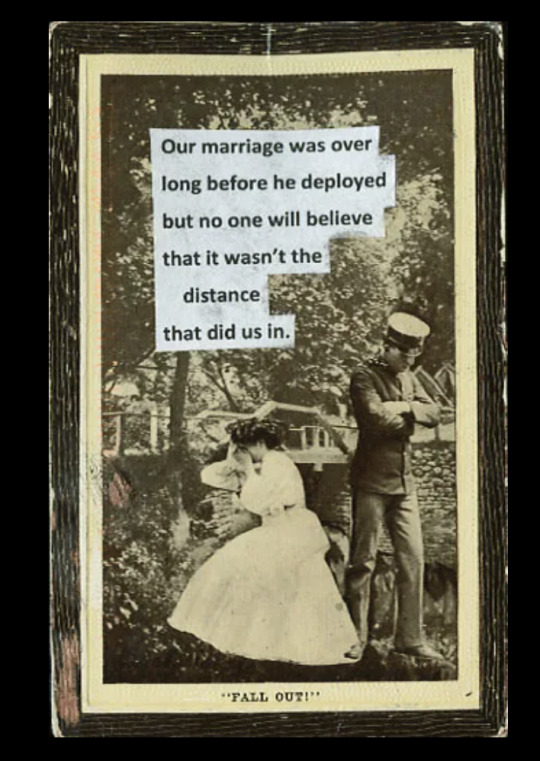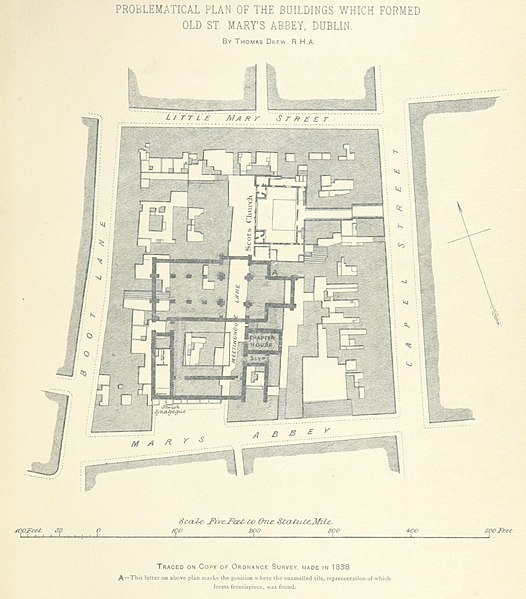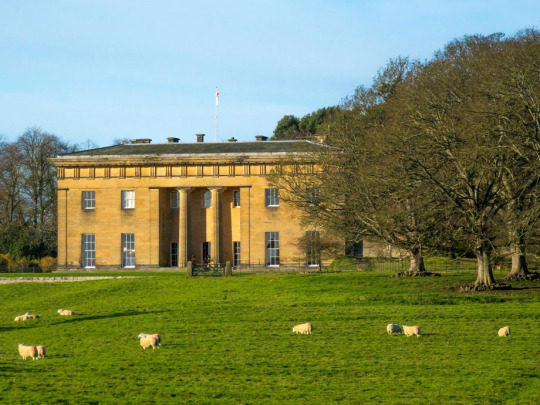#earl of nottingham
Note
UGH why is ur Nottingham such a DILF!!!!!!
the way i started laughing when I saw this
the man IS a dilf. period full stop taking no objections

#okay but knottingham is the only one here who really needs any mental assistance 😋#we need to talk about you and the earl of shrewsbury mr. finch#stop jackin off aggressively every night to the thought of berry <- WHO ACTUALLY SAID THAT#tumlr really freakified me. my friends can tell#i need more nottingham on this blog#daniel finch#earl of nottingham#numero 2#suggestive
4 notes
·
View notes
Text


The Redemption of Earl Nottingham, by boemi1800
6 notes
·
View notes
Text
medieval/early modern history is a fun game of "Where Did That Earldom Go?" where you have to follow a chain of biography citations, genealogical trees, and wikipedia pages for old men who died childless to figure out where the hell that earldom got to, and if it even remained an earldom
#🗡️#anyway#the earldoms of surrey and nottingham came free with the dukedom of norfolk!#in the early fifteenth century that is#they found their way into the hands of richard duke of yorfolk (york and norfolk)#but richard died young thanks to a certain richard iii who shall not be named#so the titles were given to the closest living relatives of richard (the younger)'s deceased wife anne de mowbray#of whom there were two: john howard and william berkeley#both were already barons#berkeley got the earldom of nottingham#howard got the dukedom of norfolk & earldom of surrey (generally conferred upon the son of the holder of the dukedom)#howard lost his life along with his estates at bosworth but his son (and grandson) later regained the dukedom#berkeley died childless and disinherited his brother so the title reverted to the crown#henry fitzroy was given the title of earl of nottingham#he also died childless!#the title eventually made its way into the hands of... guess who?#yeah it was the howards
6 notes
·
View notes
Text


0 notes
Text
An Abbey in Dublin Unearthed
Excavations in Dublin city centre have uncovered the remains of what was once one of Ireland’s most important medieval monasteries. St Mary’s was a House of Benedictines, followed by Savignac monks and then Cistercians, and it was exceedingly wealthy, with the added bonus of being permitted to claim goods from shipwrecks.
At times, it was quite a troubled place–the mayor of Dublin, Robert de…

View On WordPress
#Archbishop of Dublin#bigamy#Dissolution of the Monasteries#Dublin#Earls of Ormond#Earls of Ulster#Earls of Wiltshire#Edward Bruce#Edward IV#executions#Henry VIII#Ireland#James Butler#John Earl of Shrewsbury#Lady Eleanor Talbot#Mael Sechnaill mac Maele Ruanaid#pre-contract#Richard Talbot#Robert de Nottingham#St. Mary&039;s Abbey#Towton#Walter Champfleur
0 notes
Text



The Beautiful Blue Catfish
Blue catfish (Ictalurus furcatus) are members of the bullhead catfish family, native to the drainages of the Mississippi, Missouri, and Ohio river basins and the Gulf of Mexico. Because of their popularity as game fish, this species has also been introduced to freshwater systems throughout North and South America, and is considered invasive in these areas.
Like many catfish, I. furcatus is a bottom dweller. They can often be found near complex structures such as rocky outcroppings, fallen trees, or sunken structures that provide both food and shelter. The blue catfish is an opportunistic predator, consuming any fish or aquatic invertebrates it can find, as well as eggs, small amphibians, and injured or recently deceased animals. Adult I. furcatus are seldom prey for other species due to their size, but hatchlings and juveniles are often food for cormorants, willets, osprey, pelicans, and bald eagles. To deter predators, this species has serrated barbs along their dorsal and pectoral fins, each laced with a particularly painful toxin.
Though they can be difficult prey for other animals, the blue catfish is a popular target for fishermen, and for good reason; they're the largest species of catfish in North America. Adults can easily reach a length of 65 in (170 cm) and a weight of 165 lb (75 kg). As indicated by their name, most individuals are grey or blue, with a lighter underbelly. This species also lacks scales, a common characteristic of catfish, and the face is framed by long whisker-like barbels that help it detect nearby food.
While generally solitary, blue catfish aren't territorial, and tend to ignore each other until the mating season. Reproduction begins in April and continues until June, during which time males attract a female by building a nest and releasing attractive pheromones. Once a female has selected a male, she lays between 4,000-8,000 eggs per kilogram of bodyweight in his nest (i.e. if the female weighs 2 kg, she may lay between 8,000-16,000 eggs). The male then disperses sperm over the eggs. Following fertilization, the male chases away the female and guards the nest for about a week, at which time the eggs hatch. The hatchlings, also known as fry, stay close together in schools for several weeks before growing large enough to disperse. It will take them a further 5 years for them to reach maturity; on average individuals live about 10 years, but can live as long as 25.
Conservation status: The blue catfish is considered Least Concern by the IUCN. Within its native range, populations face minor threats from dams and droughts. Where it has been introduced, the species is considered invasive due to its voracious appetite.
If you like what I do, consider leaving a tip or buying me a ko-fi!
Photos
Missouri Department of Conservation
NOAA
Earl Nottingham
#blue catfish#Siluriformes#Ictaluridae#ictalurids#catfish#ray finned fish#bony fish#fish#freshwater fauna#freshwater fish#rivers#river fish#lakes#lake fish#north america#southern north america
218 notes
·
View notes
Text
I saw a couple of reviews saying there wasn’t enough football being shown in season 3, this is why Ted Lasso is ‘losing its touch’, we’re not seeing enough of the significant moments on the pitch etc etc; so because I’m a pedantic little fucker I decided to science the shit out of this. Bare in mind, ‘no football featured’ means no matches, so with that in mind:
Season 1
Pilot – No football featured
Biscuits – Richmond’s bad loss against Crystal Palace, not shown
Trent Crimm: The Independent – no football featured
For the Children – no football featured
Tan Lines – Richmond’s win against Unknown, match shown
Two Aces – No football featured
Make Rebecca Great Again – Richmond’s significant win against Everton, match not shown
The Diamond Dogs – No football featured
All Apologies – No football featured
The Hope That Kills You – Richmond lose against Man City, match shown
Season 2
Goodbye Earl – Richmond draws against Nottingham, match shown (sorry Dani…)
Lavender – No football featured
Do the Right-est Thing – Richmond lose against Coventry after Sam’s protest, match not shown
Carol of the Bells – No football featured
Rainbow – Richmond undergo a bad streak and then play Sheffield Wednesday, match not shown (but the run-up is)
The Signal – Richmond win against Tottenham, match shown (but not the crucial victory)
Headspace – No football featured
Man City – Richmond lose against Man City, match shown
Beard After Hours – No football featured
No Weddings and a Funeral – No football featured
Midnight Train to Royston – Sam scores a hat-trick, not shown
Inverting the Pyramid of Success – Richmond win against Brentford, match shown
Season 3
Smells Like Mean Spirit – No football featured
(I Don’t Want to Go to) Chelsea – Richmond ties with Chelsea, match shown
4-5-1 – Zava leads Richmond to victory, series of matches shown
Big Week – Richmond lose to West Ham, match shown
Signs – Richmond experience a bad run of losses, aftermath of matches shown
Sunflowers – Richmond lose to Ajax, aftermath of match shown
The Strings That Bind Us – Richmond lose to Arsenal, match shown
We’ll Never Have Paris – Richmond enjoy a winning streak, only the reactions shown
La Locker Room Aux Folles – Richmond win against Brighton, match shown (but not Colin’s turnaround)
I’d say we’re actually seeing a lot more football this season than we have done before. The pattern of not having all the significant moments on the pitch portrayed is something Ted Lasso has been doing since season 1, after all. Remember the win at Everton? Nate’s magnificent ‘Park The Bus’ over Tottenham? Sam’s hat-trick? Isaac getting his mojo back on the field? Nope, neither do I, because we didn’t see them. In a way they’re not nearly as important as the character development off the field that surrounds it, and the show’s always been very honest about that.
After all, the cast do a great job, but with the exception of Cristo Fernandez, they’re not footballers - they were never going to be expected to do all the work on the pitch. Now there might be something of an argument for saying ‘but we’re less emotionally invested in where the team are placing in the league’ this season - but if I’m honest, I remember approaching both the s1 and s2 finales thinking ‘oh that’s where they are in the league?! god, I forgot we were supposed to be keeping track of that’. Football has always been a supporting role in this show, not the star.
Anyway, EXCUSE ME SIR THIS IS THE FOOTBALL ADJACENT SHOW NOT SOCCER SATURDAY THANK YOU
301 notes
·
View notes
Text
OKAY MANHWA REC LIST
CONCUBINE WALKTHROUGH
the main reason i made this list lol concubine walkthrough is a video game isekai with a. a really REALLY cool artstyle b. very well thought out plot that kept me guessing and c. lovely characters. the game itself is set in historical korea so if youre a fan of that id rec. super super good
the art btw ⬇️


THE VILLAINESS EMPRESS' ATTENDANT
this one i started reading recently! the art is cute, plot is also fun w a healthy dose of comedy and i really like the empress akfjsm her and the mc have such a good relationship its great

could be yuri but its not and honestly i love it either way
FOAM OF THE SEA
okay well this one i dont have much to say about cus only 2 chapters are out so far lol BUT its intriguing!! the premise so far is that the main character, having been pushed off a cliff by her lover, is resurrected in a different body by a sea witch n is now out for revenge. has very strong little mermaid elements and againnn the art is lovely. look at the cover!! the art !!


S-Class Hunter Doesn't Want to Be a Villainous Princess
IF YOUVE READ BEWARE OF THE VILLAINESS AND YOU LIKED IT AND HAVENT READ THIS YOU SHOULD. same artist!! same energy!!! tower dungeon protagonist is thrown into a romance plot and now has to clear this to get back home . i love her so much shes so op lmao. anyway its a good action/comedy so far and the constellations are funny too

I SEE YOU
i am rereading this yet again. its so good its so so good you will cry and your heart will feel warm and happy i promise. it handles grief and friendship and the side characters so well the backstories are so !! pain inducing !! and good !! and honestly its so easy to like the characters !! if you pick one thing to read from the list please make it this. also theres this silly man


MY FAVOURITE IDOL
super super super good take on the idol genre !!! i will admit i dont read much manhwa about idols (like. at all) but i am really enjoying how they explore the industry in this one. plus theres some bodyswapping :D and the character arcs are great too !! both mains learn a lot from each others lives :]

they are good kids
THE REDEMPTION OF EARL NOTTINGHAM
INSANELY GOOD !! the author clearly did a lot of research into the era this is set in -- early 1900s, during WW1 (which on its own is pretty unique like im not seeing a lot of historical manhwas set this time) and definitely has some very heavy themes. the mc time travels back to her twenties just before ww1 breaks out, after her marriage goes wrong w her husband and she dies from. falling down the stairs. RIP. i just think its really well written and the pacing is lovely - the author is not infodumping all the bad things that happened in one go and its working really well. also look at this guy

okay ive hit image limit cus im using app, truly terrible. TBC
35 notes
·
View notes
Text
Thank you @harpothemarx <3 <3 <3
1. 3 ships: Newmann! (forever!) and lately Guy of Gisburne/Robert de Rainault (Sheriff of Nottingham) and Tomgreg
2. First ever ship: Han and Leia I guess but also maybe Bert and Erie or Frog and Toad?
3. Last song: The Path of the Wind (Instrumental) - Joe Hisaishi
4. Last movie: Miss Marple: Nemesis (1987) - a beautifully made tv movie.
5. Currently reading: The entire Sherlock Holmes canon. Got through A Study in Scarlet, The Sign of Four, and now I've started A Scandal in Bohemia.
6. Currently watching: The Hound of the Baskervilles 1988...again. Like right this minute. But also Colditz.
7. Currently consuming: Made myself palak paneer from scratch again. Just finished my allotted caffeinated beverage of the day, my usual Earl Grey.
8. Currently craving: Palak paneer....hence me making it for the second time in a week.
9. people to tag: @thetookasnest @sharky857 @jimgandolfini @pokemonandcatsmostly @spengnitzed @slowburncowboy @patster223 @dagrans @bamfcoyotetango @thesundaytea @problemwithtrouble @stalksships @safetytree @ladylier @trifoliate-undergrowth
40 notes
·
View notes
Note
Did Henry Tudor meet Elizabeth of Edward IV of England and York in house of york?
Hello, I'm not sure I understand your question. Are you asking if Henry Tudor ever met Edward IV and Elizabeth of York whilst Edward was still king? It's impossible to know, but there might actually be a possibility that Henry met Edward IV (less likely he met Elizabeth imo). To be clear, this is a personal theory based on some of the testimonies given for Henry and Elizabeth's marriage dispensation in 1486.
William, earl of Nottingham (64 years old): 'says that he has known the aforesaid prince Henry well for twenty years and more, and the said lady Elizabeth for sixteen years' => That means he knew Henry since at least 1466, and Elizabeth since 1470/1.
Sir Richard Croft (54 years old): 'says and answers that he has known king Henry well for twenty years, and the said lady Elizabeth for sixteen years' => Again, that means he knew Henry since at least 1466 and Elizabeth since 1470/1.
Sir William Tyler (43 years old): 'says that he has known prince Henry [now king] well for twenty years, and the lady Elizabeth for twelve years' => That means he knew Henry since at least 1466 and Elizabeth since 1470/1.
Those two dates are relevant to the Yorkist establishment (hold this thought). I think it's possible those three men first met Elizabeth of York as she fled with her mother and siblings in 1470 to the Tower and then to Westminster Abbey, or they might have met her in 1471 when Edward IV returned and rescued his family from sanctuary. I don't know exactly what kind of ceremonies were held after Edward's triumph over the Lancastrians but it's possible Elizabeth was present on those occasions.
Some of the other witnesses said they knew Henry for sixteen/fifteen years as well — specifically Christopher Urswyck (Margaret Beaufort's confessor) and Sir William Knyvett. It would make the most sense for the majority of people to say they knew Henry since 1470/1, considering Henry Tudor came to London during the readeption of his uncle Henry VI, and would have met the courtiers at that time. But those three people* — the Earl of Nottingham, Sir Richard Croft and Sir William Tyler — said they knew Henry at least since 1466. What was Henry Tudor doing in 1466?
At that time Henry was a 9 year-old in the custody of William Herbert, an important representative of the Yorkist king in Wales described as 'King Edward's master-lock'. It's possible William Berkeley (later Earl of Nottingham), Sir Richard Croft and William Tyler all knew Henry from visiting the Herberts in Rhaglan Castle**, though it's impossible to say if they had any degree of personal friendship with the Herberts. In 1466 there was however an event that was of importance for both the Herberts and Edward IV.
In that year William Herbert married his eldest son and heir to Mary Woodville, the king's sister (in-law) in a ceremony that took place in Windsor Castle, one of the king's residences. It was apparently such a great event a Welsh poet later praised it in one of his poems dedicated to Willaim Herbert:
The foremost king of Britain and its realm / Gave his sister to him / He held a great wedding-feast in Windsor / For this man, in his royalty / A generous feast for our lord who is of our tongue, / May he be seen again as a prince!
This is pure speculation but I ask myself: is it possible William Herbert took his whole family to Windsor, including his ward Henry Tudor, for his son's wedding feast? If so, many Yorkist partisans such as the Earl of Nottingham and Sir Richard Croft would have had the opportunity to meet Henry on that occasion — in turn, Henry would have had the opportunity to at least see King Edward. Of course there's no way to really know that whilst no concrete evidence comes up, but it's fascinating to think Henry might have seen/know Edward IV.
This isn't taking into account, for example, the possibility that Edward IV might have visited William Herbert at Raglan in one of his travels, to which Henry would have seen him as well. A royal visit to Raglan is the only way I can think of that Henry might have seen Elizabeth of York, as she was only merely a few months-old at the time of her aunt's wedding in Windsor, and would not have attended the ceremony. Furthermore, if Henry and Elizabeth had been present on the same occasion/wedding the three witnesses above would have given the same number of years for knowing them both***, which was not the case.
However, I think a royal visit from Edward IV to Raglan is less likely, given it was not documented anywhere, not even in Welsh poetry, and William Herbert was enough of a patron to have this visit documented in that way. So all in all, I think it's very unlikely Henry Tudor ever met Elizabeth of York before 1485, though I think there's a slight chance that he have met Edward IV in 1466. Again, this is all pure speculation, though.
_____________
* It's important to notice that all three were Yorkist partisans: Sir Richard Croft fought at Mortimer’s Cross, Towton and Tewkesbury on Edward IV's side — he and his brother were tutored with or were the one who tutored Edward whilst Earl of March and his brother Edmund in Ludlow*. Apparently the letter Edward and Edmund jointly wrote to their father Richard of York complained about Sir Richard Croft and his brother. The Crofts were neighbours of the Mortimers, which then encompassed Richard of York and his sons. The Battle of Mortimer's Cross took place on Croft soil. Sir Richard's wife Eleanor ran the household of Edward Prince of Wales, Edward IV's son, and his younger brother (also called Richard Croft) was one of Edward's tutors in Ludlow. Henry VII later made Sir Richard Croft his treasurer, and also made him Prince Arthur’s steward in Ludlow later on.
William Berkeley was created Baron Berkeley by Edward IV and became one of his privy councillors in 1482/3. He might have been the same William Berkeley, knight of the Body, who was attainted in Richard III’s Parliament and joined Henry in exile. It would be weird for the act in Parliament not to mention his title, though, since he was created Earl of Nottingham two days after Richard III was declared king. Either William Earl of Nottingham or this other William Berkeley, knight of the Body, hosted Margaret of York when she visited England in 1480.
** It would be really awkward if William Berkeley (later Earl of Nottingham) was intimate enough to visit the Herberts, considering he killed in battle William Herbert's son-in-law, Thomas Talbot, 2nd Baron/Viscount Lisle (Margaret Herbert's husband) after Lisle challenged him to a trial of arms over the Berkeley lands in 1470. Lisle had been Herbert's ward in the same way Henry Tudor had been. His wife Margaret Herbert miscarried a boy shortly after his death. I believe this is the dowager Viscountess of Lisle that Henry granted a financial settlement in 1492.
*** For example, Sir William Knyvett said he knew Elizabeth of York from the day of her birth 🥺 (and had known Henry for fifteen years, that is, since 1470/1 the Readeption years).
20 notes
·
View notes
Text
Court Circular | 6th February 2024
Sandringham, Norfolk
The Princess Royal, on behalf of The King, held an Investiture at Windsor Castle this morning.
St James’s Palace
The Princess Royal, Patron, Royal College of Occupational Therapists, this afternoon attended the launch of Nottingham West Primary Care Network’s Interactive Group Therapy at Plumptre Hall, Church Street, Eastwood, and was received by His Majesty’s Lord-Lieutenant of Nottinghamshire (Sir John Peace).
Her Royal Highness, President, UK Fashion and Textile Association Limited, later visited GH Hurt and Son, 65 High Road, Chilwell, Nottingham.
The Princess Royal, Royal Fellow, the Royal Academy of Engineering, accompanied by Vice Admiral Sir Tim Laurence, this evening attended the announcement of the winner of The Queen Elizabeth Prize for Engineering at the Science Museum, Exhibition Road, London SW7, and was received by the Earl Cadogan (Deputy Lieutenant of Greater London).
10 notes
·
View notes
Text
I like to imagine that Nottingham needs to choke on aphrodisiacs in order to have any sexual desire at all (SHREWSBURY IS AN EXCEPTION LMAO NOTTINGHAM HAS A SEXUAL SEIZURE EVERYTIME BERRY SPEAKS/j but you get the idea)
He's not ace but like... it's just hard for him to boner up yknow
I feel like such a clown saying this
Also he barely needs any aphrodisiacs to get REALLY FREAKY
REAAAAAAAAALLLY FREAKY MAN HE COULD RIVAL BERRY IN THE BEDROOM 😭😭
And idk maybe he or his wives liked that a lot I mean 28 pregnancies between your two wives (8 for the 1st and 20 for the 2nd) and 13 surviving children is kinda extreme don't ya think? you do not need that many spare heirs
when under the influence of an aphrodisiac hes like an omega going through heat?? Actually alpha rut or whatever fits better cuz i can only see him being dom
I am no omegaverse expert i had to search this up send help typing those words out do not feel right
he would literally fuck anyone if they walked in during his 'heat'
SHREWSBURY FIRST
#suggestive#ABSOLUTELY AWFUL THOUGHTS#coming from your local ace#POV: you are just some innocent fella looking for more things about history and you stumble across this#i feel bad for the normal folks out there#but like i had the dream between him berry and halifax okay he is CRAZY#UNDER APHRODISIACS#i could do so many things with him and berry#but once i put them into words or art i am just befuddled like *I* thought of THIS???#earl of nottingham#daniel finch
3 notes
·
View notes
Text


The Redemption of Earl Nottingham, by boemi1800
5 notes
·
View notes
Text

Gone to rack and ruin?
By Vice Admiral Sir Timothy Laurence | Published 29 July 2020
Country Life Guest Edited by HRH The Princess Royal
What on earth do you do with a ruined, but historically significant country house?
This is a question that plagues the average workaday heritage chairman, causing headaches, insomnia and occasional bouts of teeth-grinding. Here, I will use four examples from the English Heritage portfolio to illustrate the challenges we face. Country Life readers may have their own views about how we should deal with them; if so, I anticipate a flood of letters offering advice. Each site is different and no one solution fits all.

Kirby Hall
Kirby Hall in Northamptonshire was built in the 1570s by Sir Humphrey Stafford and, after his death, by Sir Christopher Hatton, Lord Chancellor. This magnificent house shows all the creative energy and architectural innovation of the first Elizabethan age.
In the 17th century, it hosted five royal visits and boasted one of the finest gardens in England. After four generations of Hattons (all called Christopher in that charming, if rather confusing, English way) it passed to the Winchilsea family, who lived there until the 1770s. Abandoned in the 1830s, it is now roofless, but retains enough of its form for us to imagine how astonishing it would have looked when first built.

John Summerson wrote: ‘The beauty of Kirby’s decline is that it was private and without violence. The house was never burnt, ravaged, used as a quarry or assaulted by mobs.’ English Heritage looks after buildings that suffered exactly those fates, but because Kirby was spared all of them, one can still appreciate there the romance of a lost grandeur.
What should we do with it? The Ministry of Works in the 1960s did its usual thorough, if, by current standards, a little over-zealous, conservation job. Part of the house is still roofed, but leaks are threatening the ceilings underneath. One proposal was to re-roof a further part of the house — the Great Gallery — and use it to display a collection of contemporary furniture, paintings and so on.
That idea has not yet passed the ‘value for money’ test. We are currently working on a modest new exhibition, which will be completed later this year. Major additional work would require a substantial funding package to match.
Sutton Scarsdale Hall

Sutton Scarsdale Hall in Derbyshire is another example of the rise and fall of a noble country house and is one of our greatest conservation challenges.
It was a Baroque masterpiece, built in the 1720s for the 4th Earl of Scarsdale using some of the notable craftsmen of the day. The splendid exterior stonework was carved by Edward Poynton of Nottingham; the Italian master craftsmen Arturi and Vasilli carried out the fine stucco decoration in the principal rooms, remnants of which are still visible.
The cost of the building over-stretched the Scarsdales — an all-too-familiar story, I’m afraid — and the house was sold in the 19th century to a local family, the Arkwrights. In turn, they were forced to sell in 1919 to a company of asset strippers.
Despite the fact that Lord Curzon’s 1913 Ancient Monuments Consolidation and Amendment Act had by then provided the Government with protective powers, many of the hall’s finely decorated rooms were sold off as architectural salvage.
Amazingly, some still survive, but sadly not in Derbyshire: three interiors are displayed at the Museum of Art in Philadelphia and a pine-panelled room is at the Huntington Library in California. The latter was given to the library by a Hollywood film producer, who had used it as a film set for Kitty in 1934. He had bought it from the newspaper magnate and collector, William Randolph Hearst.
More happily, the hall was saved from intended demolition in 1946 by Sir Osbert Sitwell. His descendants handed it to the nation in 1970.
The roofless hall stands proudly on a prominent hill, an important part of the visual landscape of the area and visible from Bolsover Castle across the valley. However, the exposed hilltop location and lack of protection from a roof or glazed windows make the building itself, and especially the exceptionally important plasterwork, acutely vulnerable.
We are currently spending considerable sums patching and making good, but, for a charity such as us, this cannot be a long-term solution. What should we do? One option would be to re-roof the whole hall — at huge expense. Another would be a partial re-roofing to cover the best areas of plasterwork.
A third would be to devise some form of tailor-made protection for the plaster-work in situ, but anything of this nature would have significant aesthetic impact. We have even thought of a private investor taking it over and turning it into a hotel or apartments. All options remain under consideration.
Witley Court

My third example presents a very different set of issues. A new house was built on old foundations at Witley Court in Worcestershire in the early 1500s, but eight generations of the Foley family (all called Thomas — rather proving my earlier point) progressively modernised the Tudor original in Jacobean, then Palladian style, enlarged the park, built a new parish church next door and, in the early 19th century, commissioned John Nash, the leading Regency architect, to remodel the house extensively.
In 1837, ownership passed to Lord Ward, later Earl of Dudley. During the Dudleys’ tenure, the house was transformed into a ‘Victorian palace’ in the Italianate style made fashionable by Prince Albert at Osborne.
The whole house and church were encased in Bath stone; a new wing and a conservatory were added. Among many additions to the gardens was the magnificent Perseus and Andromeda fountain, fed from a new reservoir in the hill behind.
As happened so often elsewhere, the estate began to be broken up after the First World War and, in 1937, a serious fire gutted much of the building. From then until it was taken into public guardianship in 1972, it was stripped of materials and vandalised, but, thereafter, it was stabilised and made accessible. The great fountain continues to operate for an hour each day and looks magnificent after a major restoration in 2004 and further work in 2016, the latter generously funded by Unilever.
Visitors can now enjoy the park and gardens and wander through the house, where the fire has revealed the various stages of its development.
There are no plans to re-roof the main house, but how can we enhance the pleasure of visiting the place and bring more of its history to life? For example, we are considering digitising the many excellent photographs of the interiors taken during its heyday, so that people can call them up on their mobile phones as they walk round.
We would like to refurbish the conservatory as a cafe. This would require expensive works to bring in services, yet those might enable us to produce more events there, following the very successful art exhibition held in 2019 — perhaps that was a harbinger of things to come.
Belsay Hall

Now, at last, for something with a roof — Belsay Hall in Northumberland. The site comprises three distinct, but related elements: a medieval castle, a 19th-century hall and, linking the two buildings, an outstanding garden. The Middleton family has owned the estate since 1270 and still lives nearby.
The hall’s designer, Sir Charles Monck, drew on the classical ideal he had seen on honeymoon in Greece and transposed the style of a Greek temple into an English villa from 1807 (Fig 6). Its sense of space, balance and rigorous architectural logic were unlike anything seen in Britain. Incidentally, Monck demolished the old village of Belsay on the site and rebuilt it in its current position outside the park — the sort of thing you could do in those days.
He deliberately quarried the stone for the hall in a way that left space for a unique garden, the ravines, pinnacles and sheer rock faces he created inspired by the ancient quarries of Syracuse, Sicily. The gardens still showcase the interplay between natural beauty and the sublime, between wild and tame, from natural woodland through the exotic-ally planted quarry to the more formal terraces and garden rooms near the house.
The family moved from the draughty castle to the new hall on Christmas Day 1817. Sadly, flaws in Monck’s internal guttering system led to wholesale infestation with dry rot. By 1980, when the family handed the buildings and garden into public guardianship, it was unoccupied, unfurnished and stripped of much internal wood and plasterwork. The silver lining of this cloud is that it is now possible better to appreciate features of its design. Standing in the beautiful central atrium,
it does feel more like a temple than a house. The windows are huge, allowing in plenty of natural light, and the acoustics are exceptional, thanks to the empty rooms, vast cellars and a network of flues.
Sound, light and empty space may hold the key to its future use; it is an ideal place for creative programming. We have in the past held innovative fashion and art shows there and have staged acoustic experiences, one with voices broadcast down the chimneys. There will, I am sure, be more of this.
We are in the middle of a major project, part funded by the National Lottery, which includes urgent conservation work, a full restoration of the gardens and a new cafe. The Middleton family and its trustees remain engaged, supportive and, I hope, appreciative of the promise of a new lease of life for Belsay.
These four examples illustrate the enormous technical and financial challenges we face with these and other houses. It’s not unreasonable to ask: why are we doing this? What is the purpose behind a heritage body preserving and/or conserving a building?
Well, we want the places to be informative — to tell us something about the people who built them, about their architectural style, about the people who lived in them or who visited them. It’s all part of explaining the story of England to current and future generations, not only to please or inform expert historians and architects, but to encourage a much wider body of people to see and enjoy our buildings.
From school groups (we host many) to local enthusiasts and anyone who has become fascinated by these places — perhaps after reading about them or seeing a Google arts fly-through online. We hope they will all want to see more, to learn more and enjoy (that word again) the experience.
We have to ask: should we preserve such buildings as they are now, strip them back to their original state when first built or restore them to how they appeared at the height of their glory? With our intact houses — such as Osborne, Apsley or Audley End — the answer is as self-evident as it is with a completely ruined castle or abbey: there really is no option. However, my examples here and others fall between those stools. There are no straightforward answers; we have to look at each on its own merits.
Total returns to past glories are rarely feasible, but allowing further decline is not in our DNA. More commonly, we seek to stabilise each place in a state of ‘sustainable conservation’ — a condition that we can maintain in the long term, avoiding costly repeated repairs. It is an evidence-based way of prioritising work according to historical significance, current condition and a better understanding of the specific causes of deterioration. Once in that state, the typical approach is ‘adaptive re-use’: bringing a building back to life by giving it new uses, which complement, rather than obscure the original.
Above all, these houses must be nurtured and loved so that they can tell their part of the story of England. English Heritage will do what it can, helped by the communities living nearby, many of which provide terrific support — and, perhaps, by the occasional generous benefactor.
77 notes
·
View notes
Text
FC refs.
Empress Larci from I Will Fall with the Emperor
Empress Navier from The Remarried Empress
Aria from The Villainess Reverses the Hourglass
Princess Odelli from Marriage of Convenience
Meldeki (?? Main FL) from Please Don’t Come To the Villainess’ Stationery Store
Siani from I became the Master of the Devil
Madelyne from The Redemption of Earl Nottingham
#ooc : the mortal#feel free to use the same FC as me#will either choose one of these for my icons#or use them as refs for my art when i draw my icons
2 notes
·
View notes
Text
The Merciless Parliament of 1388 & the Great Proletarian Cultural Revolution.
On the 16th of May, 1966; the People's Daily published an article which amongst other things held the continuance of class struggle within the Communist Party by the capitalist roadsters and those who hold true to socialism which under normal circumstances would be carried via the two-line struggle within the party but under extraordinary circumstances can be carried by the mobilisation of the masses to carry out direct action which was further outlined in an article entitled "Bombard the Headquarters" which was published in the People's Daily in 5th August, 1967.
One such instance was England during the reign of Richard II. He was very biased towards his favourites like Robert de Vere whom he made Marquess of Dublin & Duke of Ireland whose sudden ascent and his abandonment of Phillipa de Coucy, granddaughter of Edward III; and Sir Robert Tresillian, Chief Justice of the King's Bench who was especially cruel during the suppression of the 1381 Peasants' Revolt and was corrupt to boot and Sir Nicholas Brembre, the Lord Mayor of London who was also infamous for tyranny and corruption including but not limited to arranging the beheading of John Constantyn in 1384 who was one of the adherents of his political rival, John Northampton and used threats of violence in the Guildhall to secure the election of his accomplice, Nicholas Exton in 1386. Sir Simon Burley, the tutor of Richard II, was quite rapacious when it comes to his serfs and was so cruel in pursuing Robert Belling ( one of his serfs) in 1381 that he charged £300 from the town of Gravesend for his manumission with this ending up sparking the Peasants Revolt in Kent.
Naturally, this state of affairs cannot last forever undisturbed so the vanguard of the people arose under the Lords Appellant who were initially Thomas of Woodstock, Duke of Gloucester; Robert FitzAlan, Earl of Arundel and Surrey and Henry de Beauchamp, Earl of Warwick. They were later joined by Henry of Lancaster, Earl of Derby and Thomas de Mowbray, Earl of Nottingham who first set up a commission to take over the government for a year starting from 19th November, 1386 to oust the Ricardian roadsters from the realm but alas, they wouldn't willingly oblige which compelled the Lords Appellant to wage a People's War against the Ricardian roadsters in 19th December, 1387 at Radcot Bridge which was an astounding victory for the masses as it resulted in the successful ouster of Robert de Vere, Duke of Ireland, Marquess of Dublin & Earl of Oxford. In the very next year, a new Parliament was summoned which carried on the struggle against the Ricardian roadsters on both the legal and extra-legal fronts in a manner that resembled the bombarding the headquarters which Mao Zedong came up with some five and half centuries later. The Ricardian roadsters were tried, convicted, executed and exiled in absentia and in the case of Sir Robert Tresillian: the anger against him was so great that the masses executed him themselves without bothering with legal formalities and direct mass action was a crucial component of the Great Proletarian Cultural Revolution and the workers and peasants were triumphant and exercising their power to purge the realm of Ricardians until John of Gaunt, Duke of Lancaster returned in 1389 and his existence fortified the Ricardians for the next 10 years.



#richard ii of england#henry iv#shitpost#april fool's day#1st april#marxism leninism maoism#mao zedong#cultural revolution#thomas of woodstock
2 notes
·
View notes